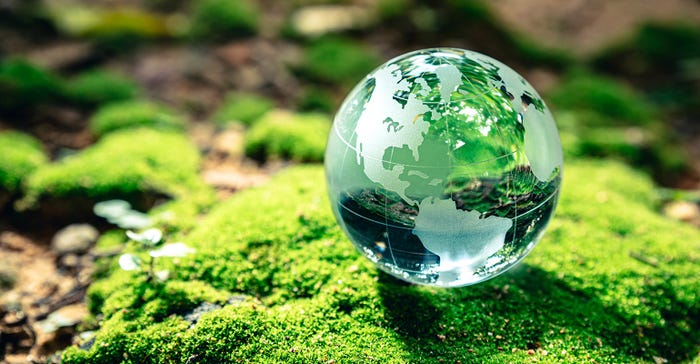In the Circular Economy, One Person's Plastic Trash Is Another Person's Treasure
As Earth Day approaches, we applaud entrepreneurs and creators repurposing ocean plastics and recycled materials.
April 19, 2023

Got your flak jacket ready? With Earth Day just around the corner on April 22, you’re going to need it.
The plastics industry — the sixth largest manufacturing sector in the country — and the more than one million people in the United States that it employs will be in the line of fire, even more so than usual. I will say this: I don’t disagree with some of the issues raised by the anti-plastics NGOs and sundry activists. In fact, they often correctly identify the problem. The solutions they propose, however, are wrong.
Eliminating plastics is not the answer
None of us want to see plastic trash floating in the ocean or fouling our environment. In the United States especially, unnecessary plastic packaging is rampant. And generally speaking, our disposable culture — which is not limited to plastics, as the glut of obsolete consumer electronics can attest — is neither sustainable nor desirable. But eliminating plastics is not the answer.
“Living plastic free” might make a good slogan for a bumper sticker, but those who have tried to walk the walk have found that it’s virtually impossible and, in many cases, counterproductive.
First of all, let’s hope that you don’t develop any medical conditions on your plastic-free journey, unless you don’t mind being treated with the instruments that were commonly used before single-use injection molded plastic medical devices came along. If you can’t picture it, you may want to stream some episodes of The Knick, a Cinemax TV series from 2014 set in a New York hospital circa 1900.
The allure of alternative materials, as we have often noted in PlasticsToday, is deceiving. When you consider the full life cycle, for example, plastic bottles are more environmentally sound than their glass or aluminum counterparts. The alternatives consume significantly more resources in the production process and have a far greater impact on climate change than the PET bottle, which is 100% recyclable. It is also lighter than a glass bottle, and, thus, requires less fuel to transport.
Paths to circularity
So, what is to be done, as someone once asked. There is no silver bullet, not by a long shot, but for reasons stated above and many more that I won’t go into at this time, including much devalued common sense, ridding the world of plastics is a nonstarter.
Increasing recycling rates, designing for sustainability at the outset, eliminating unnecessary layers of packaging, developing chemical recycling, investing in compostable and bio-polymer technologies, and recognizing the ultimate futility of a single-use, disposable model of consumption are parallel pathways to a circular economy.
Using ocean plastics and plastic waste to manufacture new products is one of those pathways. As André Barrow, a professor of energy and process systems engineering at Zürich's technical university noted, “Plastic is considered cheap, which for a long time was a blessing but has now become a curse. Given its outstanding properties, we should view plastic as the high-quality material it truly is.” That extends to plastic waste, as well. Extracting value by using it to make cool new products is a win-win.
Enjoy our slide show, and happy Earth Day!
Rick Lingle contributed to the slide show.
About the Author(s)
You May Also Like




